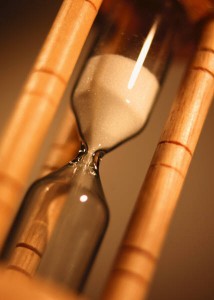Teach or learn English while listening to popular songs! 'Am I Wrong" by Norwegians Nico & Vinz (it is in English, don…
Posted by US Conversation on Wednesday, April 1, 2015
Teach or learn English while listening to popular songs! 'Am I Wrong" by Norwegians Nico & Vinz (it is in English, don…
Posted by US Conversation on Wednesday, April 1, 2015
If you guessed that the error is confusing your and you’re, you guessed it right. The pervasiveness of this error is just mind bogging. This error is common among both college graduates and people who never got their high school diploma. Why do people make this error? I think the reason is laziness and discounting the difference between the two as something insignificant. The reasoning goes something like this: they sound the same, and the context will help the receiver of the message to figure out which one I mean, so why should I bother to spell them correctly? A close second is the “there, they’re, and their” confusion.
The ironic part is that non-native speakers learn to differentiate and use these words correctly relatively quickly. This type of error is rare beyond the beginning level of English acquisition.
I don’t know about you, but when I see a native speaker making errors as basic as this, I can’t help but wonder whether this person is also sloppy about other things in life…

When we list a few items one by one, we separate them with a comma:
We invited Roosevelt, Washington, Lincoln.
What if the last two items are joined with the conjunction and? Do we still need a comma? In many languages, like Russian, Spanish, Greek, German, French, the comma before the conjunction is not the norm. In English, however, opinions among writers and editors differ on whether to use the comma between the two final items.
1) We invited Roosevelt, Washington and Lincoln.
2) We invited Roosevelt, Washington, and Lincoln.
The final comma before the conjunction and is called a serial comma or Oxford comma.
In American English most style and punctuation guides mandate the use of this comma because it helps avoid ambiguity (confusion).
This funny cartoon demonstrates how we could understand the sentence without the final comma. Did we invite the rhinoceri and two people? Or did we invite two rhinoceri who have human names?
 Communicating with native speakers is one of the top goals of foreign language learners. There are, however, certain challenges in teaching and learning conversational English that are difficult to address in a regular classroom setting.
Communicating with native speakers is one of the top goals of foreign language learners. There are, however, certain challenges in teaching and learning conversational English that are difficult to address in a regular classroom setting.
Limited Classroom Exposure • even an excellent instructor is just one speaker, with just one individual pronunciation and personal communication style. The Internet, movies, and TV are excellent resources, but they do not provide feedback on comprehension. In other words, how do learners know if they have understood something correctly?
Language is Culture Specific • without being a member of a cultural group, it is difficult to understand the attitudes, feelings, beliefs, personal values and subtle gradations of interpersonal relationships in the target culture. In other words, the learner may understand what native speakers are saying, but may not understand why they behave the way they do. What are people concerned about or afraid of? What makes them happy? What is considered “good manners”? When can you consider yourself a “friend”? Meaningful communication with people from another country, continent or region requires understanding of their cultural peculiarities.
Authenticity of Instructional Materials • most textbooks and instructional materials are written by professional authors and/or teachers with a heavy focus on Standard English. Instructional dialogues and videos are staged and scripted and do not represent the variety of patterns of authentic communication.
Real life, authentic conversations are not prepared ahead of time. They are spontaneous by nature. How does this spontaneous speech differ from the language of instructional dialogues?
Here is the comparison:
| Instructional Dialogues | Spontaneous Speech |
| Complete sentences | Short, elliptical sentences and idea units |
| Standard grammar | Frequent ungrammatical structures |
| Formal vocabulary | Slang, swearing, social and professional jargon |
| Limited and “predictable” vocabulary | Wider range of vocabulary choices |
| Explicit reference to people, objects | Implied knowledge of the subject, acronyms, abbreviations |
| Few fillers, if any | Frequent fillers |
| Distinct turn-taking | Interruptions and pauses |
| Intonation: wide and frequent pitch movement | Intonation: more monotonous |
| Enunciation: excessive precision | Less precision |
| Standard accent | Multiple regional and international accents |
With so many distinct differences between the instructional and authentic materials, it is only natural that language learners, who have not been exposed to and trained in features of spontaneous speech, have difficulty communicating with native speakers. If your goal is making friends, living and working or doing business in an English-speaking country, it is essential you use instructional materials based on authentic, spontaneous conversations.
Which one is your favorite? Let’s vote for the cutest, nicest, most impressive, and overall best accent/variety performed by Amy Walker in this video! I wish I had this fine ability to mimic sounds and prosody (rhythm, stress, and intonation) of spoken text! I think people who can do that are very special.
Enjoy and don’t forget to vote!
What is your favorite accent/variety from this video?
For many of us, immigrants and English as a second language speakers, Thanksgiving is not just a holiday. It is also a word that is very difficult to pronounce. I struggled with it for quite a while and couldn’t pronounce it clearly enough. Then I tried something that helped me and now I’m sharing this trick with you. I hope it helps you as well.
Here it is: the word consists of two parts “thanks” and “giving” since the idea of the holiday is “giving thanks” for everything good that we have in our lives. So if you have a hard time pronouncing this word, try reversing the parts and pronouncing “giving thanks” a few times, at first slowly, then gradually increasing the speed. Giving thanks, giving thanks, giving thanks….I bet after that, you’ll find it easier to pronounce “Thanksgiving”.

Please let me know if it helped. 
By the way, did you know that this year, Butterball -the largest producer of turkey in the country- announced a shortage of the juicy birds? What happens if you don’t find a fresh turkey in your store? Follow the advice of this turkey in the picture and eat ham!
“Teacher, I understand the words, but I still can’t make sense of what people are saying! Why?”
Some people think that in order to communicate in a foreign culture all they need is to learn the language. There are usually a few cultural notes in most language courses that provide learners with information about customs and traditions in the target culture. The language training provides adequate information about what to do and say in simple situations, like shopping, hiring a taxi, or looking for a hotel. But chances are, most newcomers will be lost if they are thrown in a spontaneous conversation between native speakers who don’t know (or don’t care) that there is a foreigner in the group. Many newcomers report this feeling of missing something important in a situation like that. Even if they understand all the words and expressions said, they sometimes don’t understand why people are saying them and why people react to certain things the way they do.
The truth is, there are a few other important “players in this game” (factors to know and understand) if we want to successfully communicate in a foreign country, the most important being the new culture.
Culture is not just holidays and traditions, food and the national colors. Culture is an unseen and powerful force that regulates behavior and communication in every society. You can speak a foreign language fluently but without cultural understanding you might not be able to make sense of much of what you see or hear in a foreign country and wonder “Why am I not understanding?”.
In the course of our life in our native culture, we don’t recognize some factors of interpersonal communication as culture factors since we grow up in a place where they are commonplace. We really begin to understand our own culture if and when we observe differences (and sometimes conflicts) between our own and foreign ways to do or say certain things. In other words, we fully comprehend our own culture only through comparing it to others.

There are a few levels of cultural understanding. Take a look at the picture that illustrates the “iceberg” theory of cultural components (from Recognizing Deep Culture’s Influence on Communicative Behavior by Stephen B. Ryan). The theory suggests that there is much more to culture than what we first see. There are several layers, and just like the case with the iceberg, the visible layer is the smallest.
According to this theory, the national colors (flag), holidays, traditions and customs, food and drinks are the examples of the surface level of culture. This is the easiest level to notice and recognize since it can be easily detected by our senses, like sight, smell, sound, and touch.
Other cultural manifestations take more time to notice and recognize. They are in the just under the surface level of cultural understanding. For example, it takes some time to notice that in the U.S., older people do not automatically enjoy privileges when it comes to waiting in lines or getting a seat on a crowded bus: they wait for their turn like any other customer in a store or a bank and stand on public transportation when there are no empty seats available. If a person gives his or her seat to accommodate an elderly, this is perceived as his or her personal choice of behavior rather than a cultural norm that dictates to do so. To people coming from cultures where elderly enjoy privileges in public places, it may come as a surprise and take time to accept that this behavior is a cultural norm rather than indifference or rudeness on the part of younger people.
The third and most important level is the one we cannot see at all. It goes unrecognized in our daily lives. This is deep culture. It is so ingrained into our consciousness that it defines what is or isn’t normal and doesn’t need explanation, or so we think. Here is an example.
Not long after I came to the United States, there was a tragic event on the news, a 10-year-old girl died while piloting a small plane. The girl’s mother said in a subsequent press conference that her daughter didn’t die in vain because she died doing what she loved to do. To a Russian (me) the incident was clearly this girl’s parents’ fault since they let such a young child do this. I thought that a 10-year-old child just isn’t ready to assume responsibility for this kind of risk, and she simply didn’t live long enough to understand what she “loved” to do. To my surprise, my American coworkers did not share my opinion. One of them said, “ This is the country of innovators and people who defy the “normal and usual’. Children are not an exception”. The spirit of freedom to do or say what you want (if it is not illegal) runs very deep in American psyche and culture, and it can come as a culture shock to unprepared visitors.
How do we prepare ourselves for this profound change in cultural format? I think that just being aware of the iceberg theory and what it means will be a huge help to anyone going abroad.
One of the essential skills ESL learners need to develop is tolerance to ambiguity. “What? Another skill I have to learn?” you might ask, ” But you (the teacher) told us that there are just four: reading, writing, listening, and speaking! Isn’t that enough already?” “Not enough, my friends,” I would say. The four skills you just mentioned are the kind of skills that are OBVIOUS and TALKED A LOT ABOUT. But there are a few others, that are as important as these four, but they are not really taught in the classroom, and I think they should be.
Ambiguity is a situation in which something can be understood in more than one way. In simple terms, ambiguity is something confusing. An ambiguous sentence could be understood in one way by some people, and in a different way by others. And this misunderstanding makes it very funny sometimes. Consider this sentence: They said they saw the Eiffel Tower flying over Paris. Who was flying? The people who said this or the tower? This sentence could be understood either way, and that’s what makes it ambiguous. Watch out for this kind of situations, because there are great many of them in everyday life, and we have to figure them all out. And how exactly do we do that? I’ll tell you in another post.
This is one of the most common questions beginners ask. Intermediate and advanced students already know: long. But beginners usually try to estimate the period of time they will need to accomplish this task.
To answer this question, I ask them first to define the terms: what does “learn a language” mean to you? Does it mean to learn enough vocabulary and basic grammar so as not to get lost in an English-speaking country or does it mean to be able to work in an English speaking country and communicate with native speakers without considerable difficulty? Or perhaps you mean to become truly bilingual and feel equally comfortable in either language – your mother tongue or English.
 This is the very first question all of us need to answer before we set out on the journey of a foreign or second language learning. The time frame for learning will depend greatly upon the purpose and the scope of the skills you intend to master.
This is the very first question all of us need to answer before we set out on the journey of a foreign or second language learning. The time frame for learning will depend greatly upon the purpose and the scope of the skills you intend to master.
If you are simply going on a short-term vacation and you need the tourist minimum – it might take just a few weeks. If you’re attempting to immigrate and acculturate in an English-speaking country and feel relatively comfortable at work and day-to-day situations, probably a few years. If it is to become truly bilingual, it might take your entire life, or the answer might be “never.” It sounds harsh, but it is the only answer I can give you if I want to be 100% honest. So, when any particular school, instructor, or “innovative method” promises you that you’ll learn a foreign language in 10 days, bear in mind what you can realistically hope to accomplish: to get the very minimum and that is it. If you want to become really proficient, it will take a lot of time and effort on your part.
There are a few other aspects that greatly impact your prospects of learning. Here they are:
Recent Comments